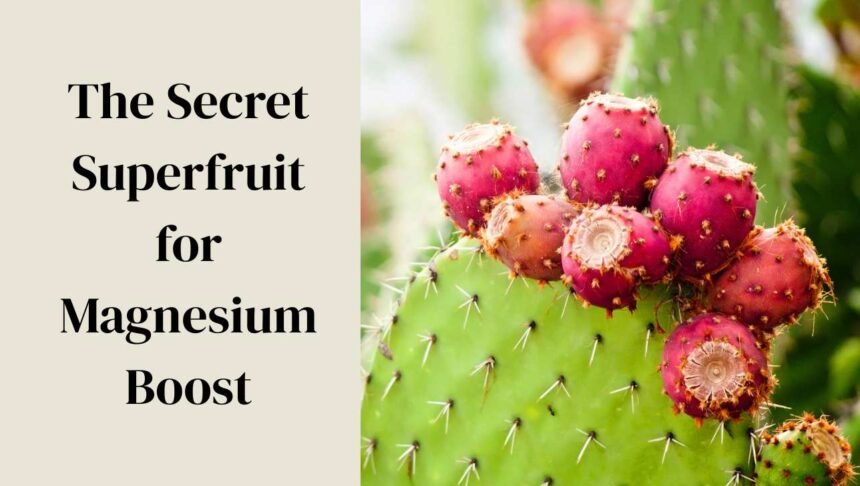When it comes to fruits that are high in nutrients, the prickly pear really stands out, especially when it comes to its magnesium level.
This bright cactus fruit comes from Mexico and the southwestern United States. It’s great for cooking and great for health-conscious people who want to get vitamins from natural sources.
What Is Prickly Pear?
It is the fruit of the Opuntia cactus and is also called a cactus pear or an Indian fig. The fruit has a colourful, spiny outside and a sweet, melon-like inside.
It has been used in Mexican food and traditional medicine for hundreds of years. In addition to its cultural importance, the prickly pear is becoming known around the world for having great health benefits.
Magnesium: The Star Nutrient
Over 300 enzyme processes in the body depend on magnesium. It affects how well muscles and nerves work, how well blood sugar is controlled, and how healthy bones are.
Many people don’t get the daily suggested amount, which is 400–420 mg for adult men and 310–320 mg for adult women, even though it’s important. (Source)
Here comes the prickly pear: one cup of this fruit has about 127 mg of magnesium, which is about 30% of the Daily Value (DV). (Source)
In terms of magnesium content, this fruit is one of the best, higher than even dried figs (101 mg per cup) and passion fruit (68 mg per cup).
Additional Nutritional Highlights
While magnesium takes center stage, prickly pear offers a suite of other vital nutrients:
- Vitamin C: Essential for immune function and skin health, a cup of prickly pear provides about 23% of the DV.
- Dietary Fiber: With 19.2% of the DV per cup, it supports digestive health and promotes satiety.
- Antioxidants: Rich in flavonoids and betalains, which combat oxidative stress and inflammation.
- Low Caloric Content: Approximately 61 calories per cup, making it a weight-friendly choice.
Health Benefits of Prickly Pear
Adding prickly pear to your diet can help your health in a number of ways:
1. Heart Health
Prickly pear’s magnesium, potassium, and vitamins help the heart work better by keeping blood pressure in check and lowering oxidative stress. (Source)
2. Blood Sugar Regulation
Studies show that prickly pear can help keep blood sugar levels stable, which makes it good for people with diabetes. (Source)
3. Digestive Wellness
Its high fibre level helps you have regular bowel movements and keeps your gut microbiome healthy.
4. Anti-Inflammatory Properties
Antioxidants like betalains help reduce inflammation, which could help people with chronic inflammatory diseases. (Source)
Culinary Uses
Prickly pear’s versatility extends to various culinary applications:
- Fresh Consumption: After carefully removing the spiny skin, the flesh can be eaten raw or added to fruit salads.
- Beverages: Its juice is a popular ingredient in smoothies, cocktails, and traditional drinks like agua fresca.
- Preserves: Made into jams, jellies, or syrups, it adds a unique flavor to spreads and desserts.
- Culinary Dishes: In Mexican cuisine, both the fruit and the pads (nopales) are incorporated into savory dishes.
Precautions
While prickly pear is generally safe for consumption, it’s essential to handle it properly:
- Spines: Ensure all spines and glochids are removed before handling or consuming to prevent skin irritation.
- Moderation: Excessive intake may lead to digestive issues due to its high fiber content.
- Allergies: As with any food, be cautious if trying it for the first time, especially if you have known sensitivities.
The Bottom Line
Prickly pear turns out to be a nutritional gem, especially for people who want to get magnesium from natural sources.
Because it tastes great and is full of vitamins, minerals, and enzymes, it is a healthy food that should be included in a balanced diet.
If you want to get more magnesium, improve your heart health, or try something new in the kitchen, prickly pear is a tasty and healthy option.




